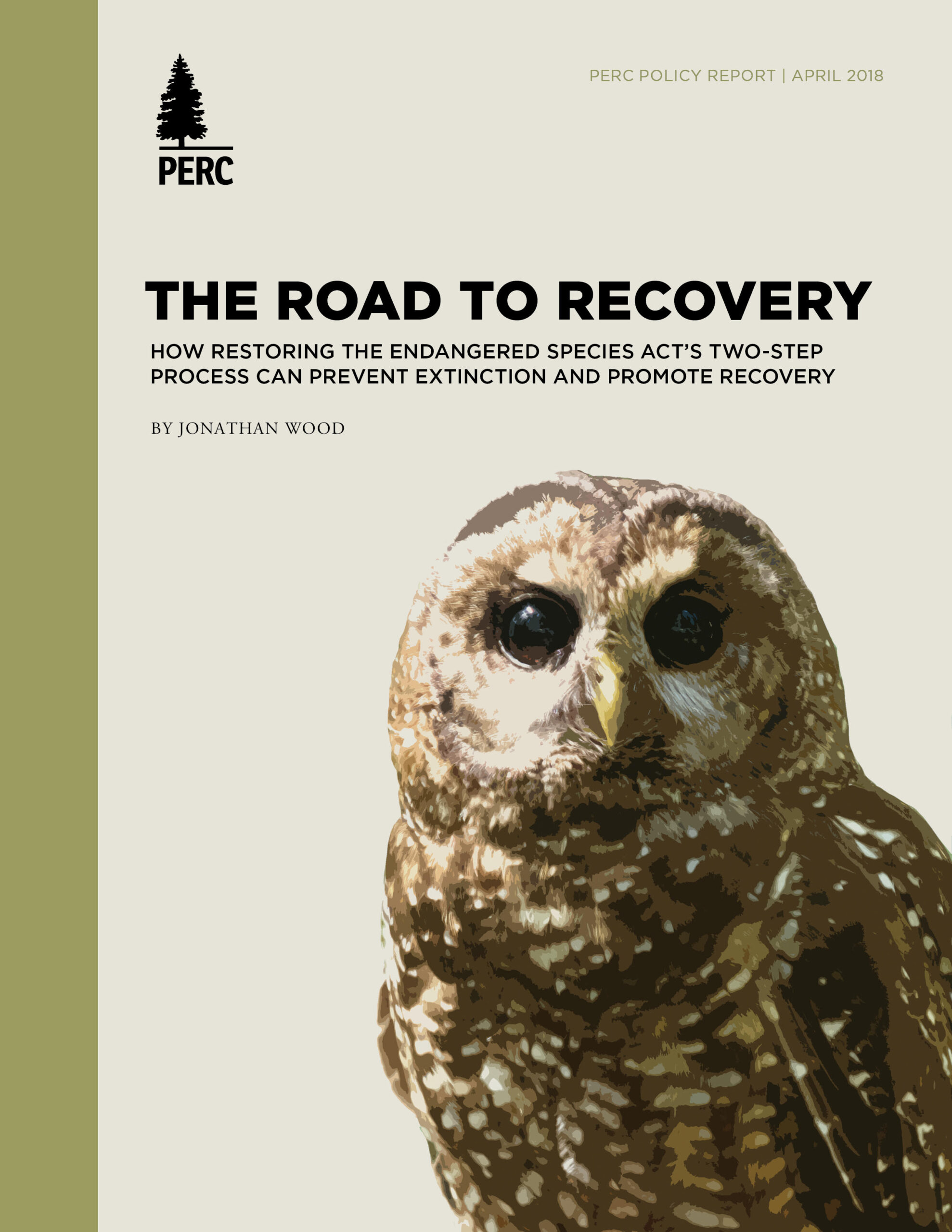DOWNLOAD THE FULL REPORT
Summary
The Endangered Species Act has proven effective at preventing extinctions but not at promoting species recovery. Because we care about preventing extinction and recovering endangered species, the challenge is to find reforms that preserve what the Endangered Species Act does well while boosting incentives for recovering species.
The statute provides for the listing of two categories of species: “endangered” species, which are currently at risk of extinction, and “threatened” species, which are at risk of becoming endangered in the foreseeable future. When Congress passed the act in 1973, it envisioned states taking the lead to protect threatened species, with strict federal regulations against “take” reserved for endangered species. In 1975, however, the U.S. Fish and Wildlife Service issued a regulation extending the take regulation to threatened species too, eliminating the distinction between the two categories.
Take is defined so broadly that it can include activities intended to help species and can complicate state and private efforts to recover species. Under the current approach, landowners who provide habitat to listed species receive no benefit; instead, they are penalized through costly regulatory burdens such as restrictions on land use, reduced property values, and costly permitting requirements.
The Department of the Interior should restore the Endangered Species Act’s distinction between endangered and threatened species, reserving the take prohibition as a backstop to protect endangered species from extinction. If the statute’s distinction between the two categories was restored, states and landowners would be encouraged to recover threatened species before they reach endangered status. A threatened listing would serve as a signal that a species was at risk of becoming endangered, encouraging states, landowners, and other groups to recover the species.
Innovative and collaborative conservation programs would be easier to develop because landowners would have greater incentives to participate. Landowners who recover endangered species would be rewarded for their efforts by reduced regulatory burdens once a species’ status was changed to threatened, creating a powerful incentive to recover endangered species. Crucially, the Endangered Species Act’s take prohibition would continue to protect endangered species from extinction.
Reviews
Almost since its enactment in 1973, the Endangered Species Act has generated controversy and political conflict. Its supporters tout the many species saved from extinction, while its critics cite the high economic costs to landowners and business. This report proposes modest changes that will prevent extinctions and promote recovery of threatened species by enlisting the collaborative efforts of private landowners.
— James L. Huffman
Dean Emeritus, Lewis & Clark Law School
Jonathan Wood gets it exactly right: We could do a better job at providing incentives for species recovery. This report correctly and creatively looks at ways to use the flexibility provided by section 4(d) of the Endangered Species Act to give landowners the right incentives for threatened species conservation.
—Timothy Male
Executive Director, Environmental Policy Innovation Center
Download the full report, including endnotes and references.




